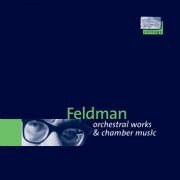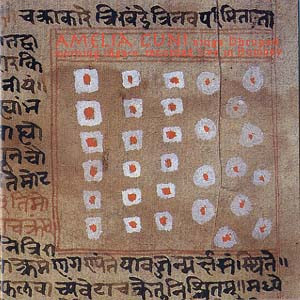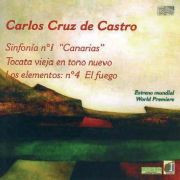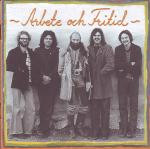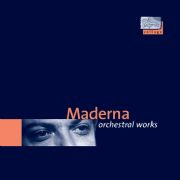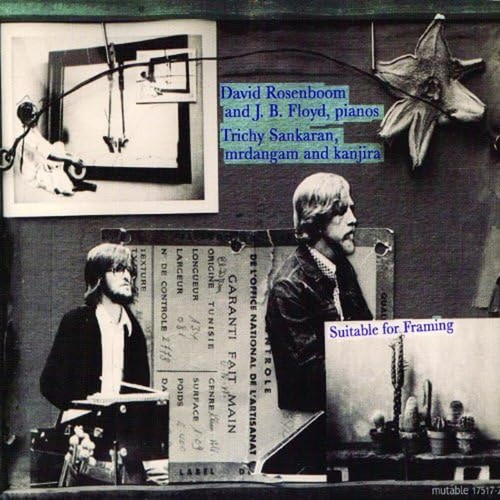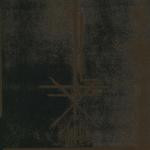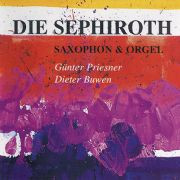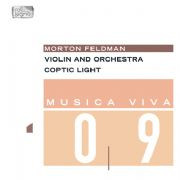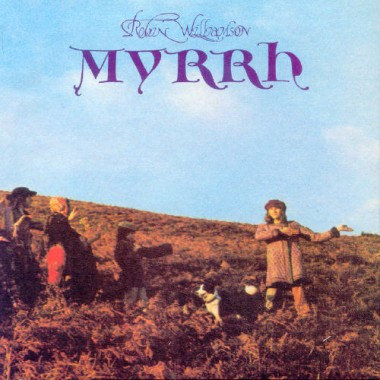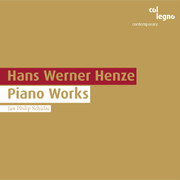Back in stock
Donaueschinger Musiktage 2004
Unusually, the 2004 annual COL LEGNO release from the Donaueschinger Musiktage is devoted to the work of one composer, Englishman Benedict Mason, and to just one extensive and curiously-titled work, commissioned in 2001 by the German Südwestrundfunk. Specially written for the hall in Donaueschingen where this live recording of the work’s first performance was made, Mason’s music explores space and acoustic, as well as the character of a variety of instruments, to fascinating effect.
Bad Boy\'s Piano Music
George Antheil was not only always ahead of his time; he was also an alert contemporary and ready to take in all artistic trends of the first half of the 20th century. There was hardly a kind of music he wasn't aware of, hardly a madness he didn't take part in, and hardly a scandal he missed, or missed to cause. All his personal entanglements are certainly reflected in his compositions – and we wouldn't expect any less from him; but his continuing reputation as a genuinely unique character is ne…
The First Born
The First Born is (quite aptly) the first collaboration between Fabio Orsi (more than a recurring name in the In A Silent Place catalogue) and Mamuthones - better known to friends and family as Alessio Gastaldello and founding member and drummer of Jennifer Gentle, the Italian psych band signed to Sub Pop Records. After six years with the Jennifers, Alessio split amicably in late 2006 and reinvented himself as Mamuthones, a one-man project delving into primitive percussive jamming and equally pr…
Eclipse
Originally released in 1975 as an LP on Iskra Records (ISKRA-001). 'First session 1: Gradually Projection'. 'First session 2: Gradually Projection'. 'Second session: Mass Projection'. New Direction Unit are Masayuki Takayanagi: electric guitar. Kenji Mori: alto saxophone, flute, recorder. Nobuyoshi Ino: bass. Hiroshi Yamazaki: drums, percussion. Recorded by Mikio Aoki in Tokyo, March 14, 1975. Includes liner notes in English by Alan Cummings.
3 Compositions Of New Jazz
The mid-'60s formation of Chicago's musician collective, the Association for the Advancement of Creative Musicians (AACM), proved a watershed event for jazz, providing a springboard for some of the next few decades' most influential performers, including the Art Ensemble of Chicago, Muhal Richard Abrams, and Anthony Braxton. In many ways, Braxton's Three Compositions of New Jazz is that movement's manifesto. Seeking a new degree of abstraction and purity, Braxton opted to eschew drums or bass on…
Orchestral Works & Chamber Music
In the early 1970s Feldman increasingly turned his attention to works for orchestra, in most cases combined with a solo instrument, like Piano and Orchestra (1975). One aspect that was important to him in all of these works was a research into sound, an "unceasing effort to create, by way of exclusion and integration, by operating with colored projection surfaces and various spatial levels, a kind of self-supporting structure elastic enough to take up the exactly fixed initial impulse and contin…
Orchestral Works & Chamber Music
Dmitri Shostakovich was to encourage the young Gubaidulina, for instance when he told her in his official function as the chairman of a board of examiners: "Keep on composing on your errant ways." Her intuition was based on her profound religious faith as well as on literature and philosophy. In her String Trio of 1988 she accomplished a particularly impressive motif transfer in the finale. The motif, which has been powerfully completed before, sneaks in again through the first violin, endures, …
Sings Dhrupad
Master of dhrupad traditional indian chant,present an exceptional performance live in Bombay, Morning meditation. With a 20 Page booklet. "This recording illustrates Amelia Cuni's highly original musicianship... A great deal of her music's appeal rests on the resplendent luminosity of her voice, and the emotional intensity with which she charges her renditions." - Deepak S.Raja
String Quartets Vol. 3 (Nos. 7-9)
String Quartets Nos. 7, 8 and 9 suggest that Rihm has finally left behind the neo-romantic expressive pathos of earlier compositions: “Real or virtual allusions to the past are rarely to be found any more – and the same holds of the luscious and revelling strings. Remnants of tonal harmony are, with a few exceptions, almost completely obliterated. … Instead, new constellations come to the fore, emancipated from traditional conceptions of sound – heeding, in particular, the principle of polarity …
Sinfonía n° 1 \'Canarias\' / Tocata vieja en tono nuevo / Los e
The Sinfonia n° 1 "Canarias" is dedicated to the composer's father, an old Canary Islander aged 94 at the time it was written. He was the reason why Cruz de Castro decided to focus the composition's middle movement wholly on the Canarian Folía. This special, important form of Canarian folk music appears both in its original form and in variations: "That's the way it should be: from the simple to the complex, from the melody line to the concentration: a harmonious whole." (Cruz de Castro) The Toc…
Arbete Och Fritid
Much needed reissue of this long-lived Swedish band's fourth album, from 1973, with an excellent 20' bonus track from 1974 tagged on. Terry Riley's 1967 visit to Sweden and his work with these musicians when they were still just young ones in High School resonates here, and you get a weird and vibrant mixture of Riley, the Third Ear Band, bits of free improvisation and ancient Swedish folk music all blended into an excellent, droney whole.
Orchestral Works
From this combination of ancient styles and arts of the past with contemporary music arises a series of particularly impressive works. In his Ausstrahlung, for instance, Maderna uses texts from an ancient Persian anthology and poems by various Persian authors in English, Italian, French and German translations, which are recited, sung and played from tape. Some ten years before, Maderna wrote the Konzert für Oboe und Kammerensemble out of fondness for the oboe. Another two concerts would follow …
Suitable For Framing
Reissue of this obscure Canadian album from 1975, originally issued on the A.R.C. Record label, with extended mixes and bonus material from the same period. Performed by David Rosenboom and J. B. Floyd (pianos, one in each channel) & Trichy Sankaran on South Indian percussion (mrdangam and kanjira). On April 19th, 1975, at Northern Illinois University, three musicians met in a milestone event from which emerged a unique, improvising trio with two pianos and South Indian percussion. Fortunately, …
ktl 2
This is the second full-length release by KTL, the formidable collaboration between Stephen O'Malley (SunnO))), Khanate, etc.) and Peter Rehberg (Pita, etc.). Devastatingly beautiful four-part follow up to the highly acclaimed debut CD, recorded in a former abattoir in Angers, as well as a 16th century manor in the extreme west of France. Taking the blueprint that was laid out on the first record even further, with the ecstatic build up of "Theme," the near-psychedelic "Abattoir," and closing wi…
Die Sephiroth
Buwen is both composer and organist, accompanying saxophonist Priesner on this rather academic program of duets. An earnest but dull remnant of late high modernism, the title piece inadvertently points up the limitations of classical sax technique, ignoring the expressive possibilities of the instrument almost completely. Buwen is self-effacing in the extreme, content to provide ground figures for Preisner to bounce off. Strange to think that one could write music this bland about a subject so c…
Violin and Orchestra / Coptic Light
Morton Feldman dedicated a whole series of compositions to the relationship between solo instruments and the orchestra: after Cello and Orchestra (1972), Piano and Orchestra (1975), Oboe and Orchestra (1976) and Flute and Orchestra (1977/78) his Violin and Orchestra (1979) marks the conclusion of these "relationship works." The variety of sound accumulated around the violin, or through the violin, in less than an hour's time ranges from delicate whispers to cantilenas in rich tones and sharp rep…
Yesterday night you were sleeping at my place
Flute, harp and percussion are the principal instruments on this recording, though you’d be hard pressed to identify them during the opening measures of “Hamida”, the longest track on the CD. But the buzzing, pulsing drone with which it begins gradually opens out into flute articulations that sound like jets of steam, a barrage of muffled percussion, and various harp-generated supplementary drones. The MUTA soundworld gets richer, louder and more pressurised as the track progresses, and…
Myrrh
this mindblowing album was originally released in 1972, when Robin Williamson was at the time still a member of the Incredible String Band, the ensemble he started with Mike Heron in 1966. These ten songs are all Williamson originals, with the exception of"Strings In The Earth And Air" by Ivan Pawle.Where his band's recordings were then getting increasingly electric, this is a return to a more acoustic bearing. This set includes some gorgeous, if overlooked, songs from the vast catalogue William…
33 RPM: 10 Hours Of Sound From France
An exhibition companion compilation to SFMOMA's 2003 listening room program 33 RPM: 10 Hours of Sound From France, curated by Laurent Dailleau. 33 RPM's Compact Disc companion features compositions from Kasper Toeplitz, Kristoff K. Roll, Jean-Claude Risset, Lionel Marchetti, Christophe Havel, Laurent Dailleau, Mathieu Chamagne, pizMO, Jean-Philippe Gross, and Mimetic. Comes with a 24 page booklet and original program details.
Piano Works
Jan Philip Schulze has been playing Henze’s piano works “in his sleep,” as he says. Indeed he has worked with the composer intensively on every piece, yet during the recording sessions he was noticeably surprised, while listening back to recordings, to find himself confronted by the work afresh, discovering new sides to it which he had previously experienced differently.



